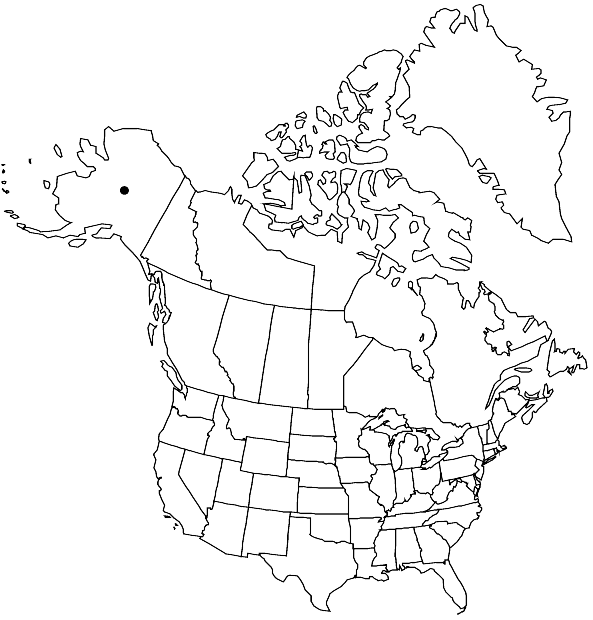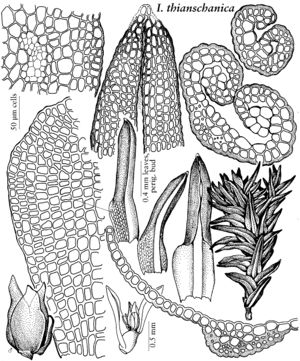Indusiella thianschanica
Bot. Centralbl. 75: 322. 1898,.
Plants in dense dark brown to black cushions. Stem central strand strong, to 1/3 stem diameter. Leaves 0.8–1 mm, apex obtuse to broadly acute, in section abaxial cells with thickened quasi-opaque external walls, basal lamina 1-stratose; largest distal leaves occasionally tipped with a hyaline apiculus of one or two cells, often eroded; costa in section with adaxial hyaline cells somewhat larger and more bulging than the semi-opaque thick-walled abaxial cells, costa with stereid cells present, two or more hydroids in the proximal leaf region, fewer to absent toward the apex; leaf cells smooth; basal cells with thicker transverse walls. Sexual condition autoicous; perigonia sessile, situated within the perichaetium projecting beyond the group of archegonia (synautoicous or cryptoicous), leaves short, suborbicular, broadly acuminate. Seta centrally attached, 0.7–1 mm. Capsule smooth (not plicate), composed of irregularly shaped thick-walled cells; peristome teeth erect, irregularly split in distal half into 2–3 filiform segments, irregularly perforate, spiculose, united at the base. Spores spherical, yellowish brown, 9–12 µm.
Habitat: Mineral soil over calcareous sedimentary rock
Elevation: moderate elevations (300[-5100] m)
Distribution

Alaska, Asia (Caucasus in Dagestan, China, Mongolia, Russia in Siberia), Africa (Chad).
Discussion
Indusiella thianschanicais is found in arid situations, with the single North American specimen on thin, fine mineral soil over calcareous sedimentary rock.
Selected References
None.
